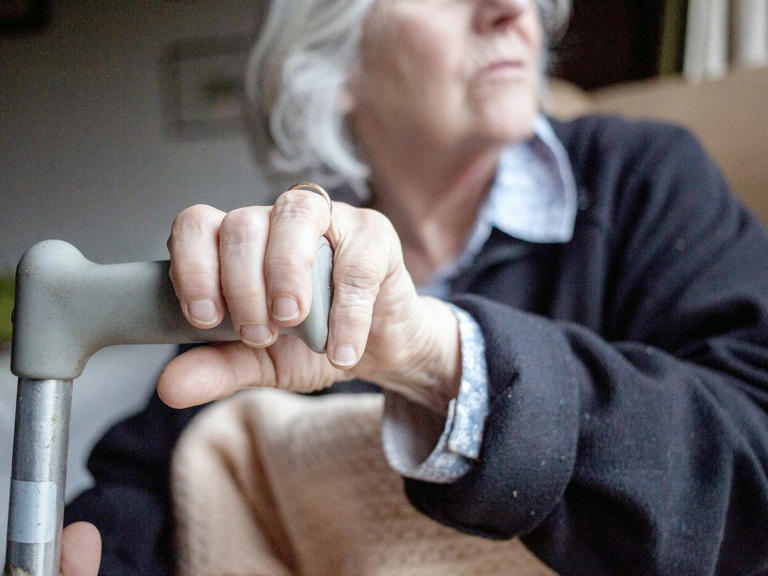WORD OF THE DAY
Damages from spring derecho in Ontario, Quebec now top $1 billionOTTAWA — Repair bills from the cluster of wind storms that pummeled southern Ontario and western Quebec in May are now over $1 billion, and with contractors stretched thin the recovery will last well into next summer.

As recovery crews face another colossal restoration job in the aftermath of post-tropical storm Fiona in the Atlantic provinces, the contractors who step in when Mother Nature lays down her wrath cannot keep up.
Kyle Douglas, a co-owner at the recovery contracting firm CRCS DKI in Oshawa, Ont., fit an interview into his day this week in between meetings about whether he had crews or equipment he could send to Atlantic Canada, and negotiations with a company that specializes in booking accommodation and travel for disaster recovery workers.
"We've definitely seen a frequency uptick of weather events, 'cats' is what we call them in our industry," said Douglas.
"Cats" is short for catastrophic events. Douglas said it's not unheard of for disaster recovery crews to go from one event to the next. After a major flood hit Calgary in late June 2013, the industry mobilized to head to Alberta only to be called back a month later, when downtown Toronto was underwater.
Douglas said that is happening more often.
"This is something we got to get our heads around for sure," he said.
Fiona is believed to be the strongest storm ever to hit Atlantic Canada. The straight line of heavy wind storms that hit Ontario and Quebec on May 21 wasn't the most intense wind storm in Canada, but it was the first time a storm of that magnitude swept through the most densely populated corridor of the country.
Referred to as a derecho, the storm began around Sarnia, Ont., and travelled more than 1,000 kilometres through to Quebec City over nine hours. It resulted in at least four confirmed tornadoes and multiple downbursts with wind speeds as high as 195 km/h.
At least 11 people were killed, mostly from falling trees as the storm caught many by surprise in the middle of a beautiful Saturday afternoon on the May long weekend.
The recovery costs are still mounting.
The Insurance Bureau of Canada said the insured losses will top $875 million, making it the sixth most-expensive storm for insurance companies in Canadian history.
It affected more than 15 million people, and an estimated 1.1 million homes lost power. More than half of Hydro Ottawa's customers went dark, and it took more than two weeks to restore everyone.
The utility has estimated it spent about $30 million to repair the grid, but a spokesman said there are still "vulnerabilities" in the system. The utility said it had more than 1,000 unique power outages and had to replace 400 hydro poles.
Hydro-Québec said derecho damage to its power grid cost $70 million, including replacing 1,125 hydro poles, 400 transformers and 40 kilometres of power lines.
Hydro One, which has more than 1.4 million customers in rural Ontario, reported fixing outages for more than 760,000 customers, replacing 2,500 poles and 500 transformers but hasn't yet associated a direct cost with the storm.
The City of Ottawa says its storm bill is around $20 million, including damage to municipal buildings, replacing 175 traffic lights and 650 traffic signs. As of September, crews removed 450 uprooted stumps from city property but had more than 2000 more left to go.
There are also individual repairs that aren't reflected in any of those costs. Like a $5-to-$8 million repair of the heritage building and airport hangar near the Ottawa airport, which is used to welcome foreign dignitaries. The Canadian Armed Forces said it could be up to two years before final repairs are completed, though temporary fixes allowed part of the building to reopen for use last week.
Other bills reported to date include $1.5 million from the city of Kitchener and $3.3 million in Peterborough.
Dave Barton, the mayor of Uxbridge, Ont., said his municipality is still adding up the cost. Along with Ottawa, Uxbridge, a township of about 21,000 people about 70 kilometres northeast of Toronto, took the brunt of the damage from the derecho.
Barton said the recovery "is starting to come together," though a local church and several apartment buildings were damaged so badly it will be a long time before they are restored.
Douglas said his company spent about 100 days on the emergency repairs in Uxbridge, but is already booked well into next summer to do the final repairs to all the roof damage.
He said the recovery effort was hampered by the same supply chain issues and labour shortages the entire country is suffering from, but he was not expecting the emotional baggage that is coming with it.
"Everyone's still recovering from the COVID hangover, so there's a lot of heightened emotions," he said. "Homeowners and business owners had a pretty rough year of being shut down, told to stay home, reopened, shut down, sent home — and then their business or houses destroyed. So from an emotional standpoint, this has probably been the hardest one we've ever dealt with in the history of our company."
This report by The Canadian Press was first published Sept. 29, 2022.
Mia Rabson, The Canadian Press












